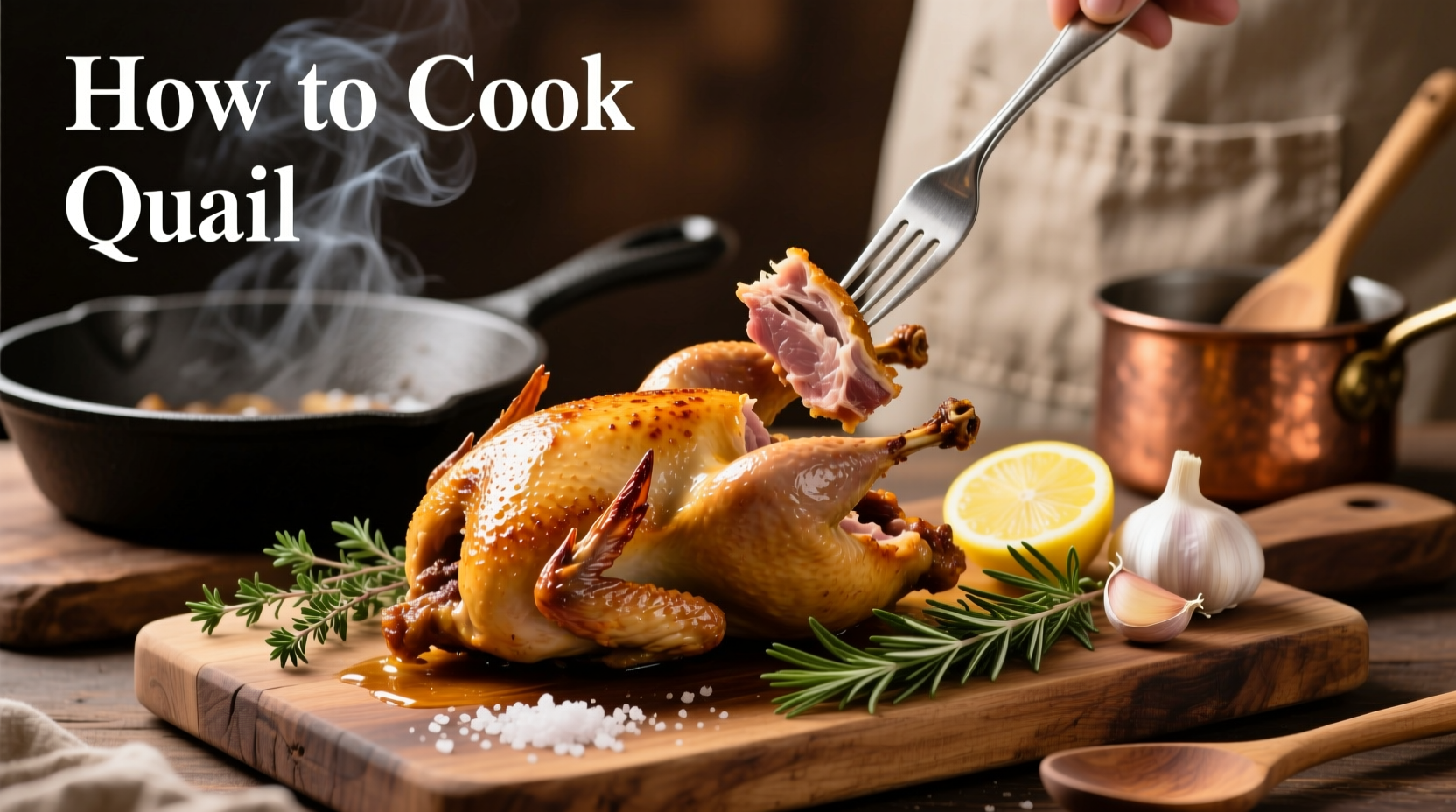Quail delivers an exquisite dining experience with its delicate flavor and tender meat, but requires precise cooking techniques to avoid dryness. As a culinary professional with extensive experience preparing game birds, I've discovered that understanding quail's unique characteristics transforms this specialty protein from intimidating to impressive. This guide provides field-tested methods that consistently yield restaurant-quality results, whether you're a first-time quail cook or refining your technique.
Why Quail Deserves Your Attention
Often overlooked in favor of more common poultry, quail offers remarkable nutritional benefits with just 130 calories per serving and higher iron content than chicken. Their small size makes them perfect for single servings, while their delicate flavor profile adapts beautifully to various culinary traditions. Unlike larger birds, quail cooks quickly, making it ideal for weeknight dinners that feel special without excessive preparation time.
Understanding Quail: Selection and Preparation Essentials
Before cooking, proper selection and preparation determine your success. Look for plump birds with firm flesh and a fresh, clean aroma. Most commercially available quail comes frozen—thaw overnight in the refrigerator for best results. Never thaw at room temperature to prevent bacterial growth, as recommended by the USDA Food Safety and Inspection Service.
| Cooking Method | Temperature | Time | Best For |
|---|---|---|---|
| Pan-searing | 400°F | 12-15 minutes | Beginners, quick meals |
| Roasting | 425°F | 15-18 minutes | Special occasions |
| Grilling | Medium-high | 10-12 minutes | Summer entertaining |
| Braising | 325°F | 45-60 minutes | Tougher wild quail |
Mastering Quail Cooking Techniques
Professional kitchens achieve perfect quail through controlled heat application. The critical temperature threshold is 165°F internally—measured at the thickest part of the breast. Unlike chicken, quail requires minimal cooking time due to its small size. Overcooking by even two minutes results in dry, tough meat. The cooking evolution timeline shows significant improvements in technique: early methods often resulted in dry meat, while modern approaches emphasize precise temperature control and proper resting.

Step-by-Step Pan Searing Method
This beginner-friendly technique delivers impressive results with minimal equipment. First, pat quail thoroughly dry—moisture prevents proper browning. Season generously with salt 30 minutes before cooking to enhance flavor penetration. Heat cast iron skillet over medium-high until water droplets sizzle immediately. Place quail breast-side down, resisting the urge to move them for 3 minutes to develop a golden crust. Flip and cook 7-10 minutes until reaching 165°F internally. Rest 5 minutes before serving—this critical step allows juices to redistribute.
Flavor Enhancement Strategies
Quail's delicate flavor pairs beautifully with complementary ingredients. For Mediterranean preparations, combine lemon zest, thyme, and garlic. Asian-inspired versions shine with ginger, soy, and star anise. The context boundary matters: wild quail benefits from stronger flavors to counter gamey notes, while farm-raised varieties showcase subtler herb combinations. Always apply oil directly to the bird rather than the pan—this creates a protective layer that prevents sticking and promotes even browning.
Avoiding Common Pitfalls
Most quail disasters stem from two errors: improper temperature control and skipping the resting period. Many home cooks mistakenly treat quail like chicken, resulting in overcooked, dry meat. The solution lies in precise timing—use a digital thermometer for accuracy. If your quail consistently dries out, try a 30-minute brine in 4 cups water with ¼ cup salt before cooking. This simple step dramatically improves moisture retention without overwhelming the delicate flavor.
Perfect Pairings and Presentation
Elevate your quail dish with thoughtful accompaniments. Creamy polenta provides a luxurious base that catches flavorful juices, while roasted root vegetables add earthy contrast. For wine pairing, select light-bodied reds like Pinot Noir or medium-dry Rieslings that complement without overpowering. Presentation matters—serve whole birds standing upright or butterfly them for elegant plating. Garnish with fresh herbs matching your flavor profile for visual appeal that enhances the dining experience.
What internal temperature should quail reach for safe consumption?
Quail must reach 165°F internally at the thickest part of the breast, measured with a digital thermometer. This ensures food safety while maintaining optimal moisture. Remove from heat at 160°F as temperature will continue rising during resting.
How can I prevent dry quail when cooking?
Prevent dryness by precise timing (12-15 minutes total), using a thermometer, and resting 5 minutes after cooking. Brining for 30 minutes in salted water significantly improves moisture retention without altering flavor.
Should I cook quail whole or butterfly it?
Both methods work well. Whole cooking preserves juices better for roasting, while butterflying allows quicker, more even cooking for grilling. Butterfly by cutting along both sides of the backbone and pressing flat—ideal for pan-searing.
What's the best way to store leftover cooked quail?
Store leftovers in an airtight container with cooking juices for moisture. Refrigerate within 2 hours and consume within 3 days. Reheat gently in 300°F oven with a splash of broth to prevent drying out—microwaving often results in tough meat.











 浙公网安备
33010002000092号
浙公网安备
33010002000092号 浙B2-20120091-4
浙B2-20120091-4